#1760s extant garment
Explore tagged Tumblr posts
Text
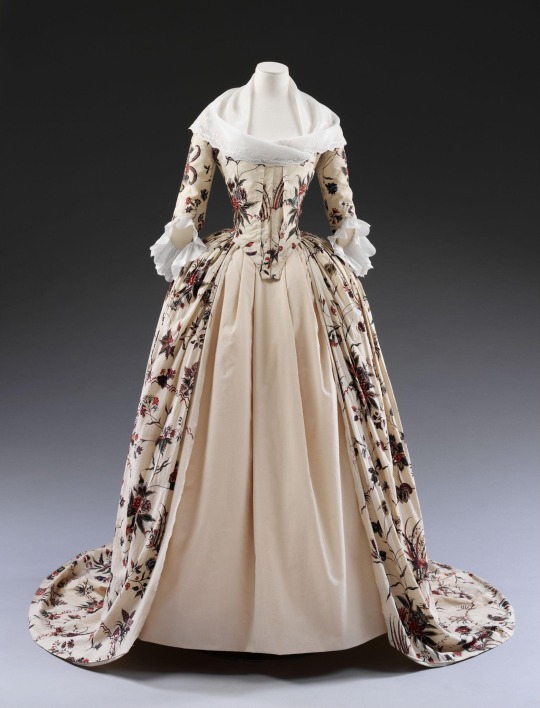

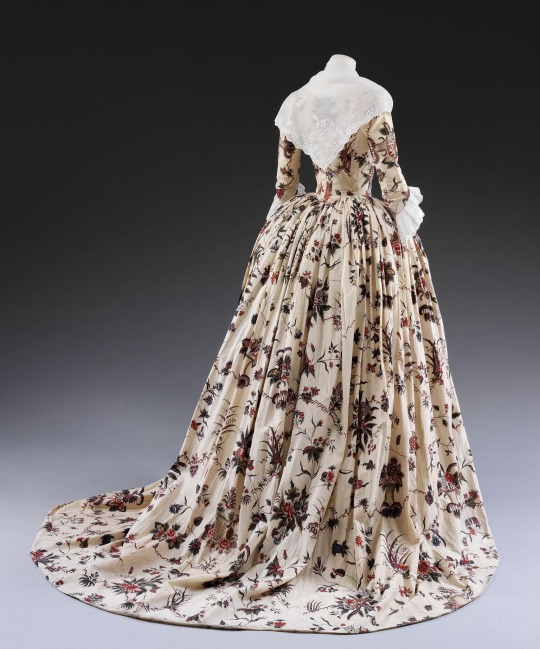
Beige Floral Cotton Robe à l’Anglaise, ca. 1760-1770, Indian (for the European Market).
Victoria and Albert Museum.
#robe à l’anglaise#womenswear#extant garments#dress#Cotton#Indian#1780s India#floral#V&A#1760#1760s#1760s dress#1760s India#1760s extant garment
223 notes
·
View notes
Text

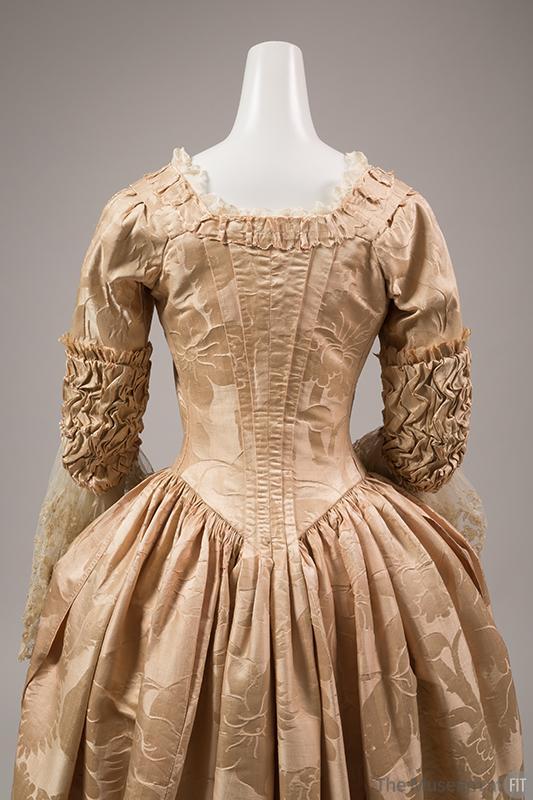
Silk damask robe a'langlaise. Spitalfields silk c.1735, dress c.1765.
via fashionmuseum.fitnyc.edu
#fashion history#history of fashion#historical fashion#history of dress#18th century#18th century fashion#robe a l'anglaise#spitalfields silk#1700s#1700s fashion#extant garments#pink#1730s#1760s#e
46 notes
·
View notes
Photo
I just noticed the little leopard print waistcoat on the right, and I feel obliged to add that that's historically accurate too!

Venceslao Verlin, 1768.

Joshua Reynolds, 1778.
And they didn't only have normal coloured leopard print, they also put leopard spots on fabric with non-leopard-y colours, just like we do today!

c. 1785-90, V&A.
(Edit: Slight correction, he didn't write it when he was 12, this was him recounting an incident from when he was 12, some years later.)

The tailors at Colonial Williamsburg made a suit for their cat
62K notes
·
View notes
Photo





Coronation suit and robes of Christian VII of Denmark, 1767
From the Royal Danish Collection
508 notes
·
View notes
Text
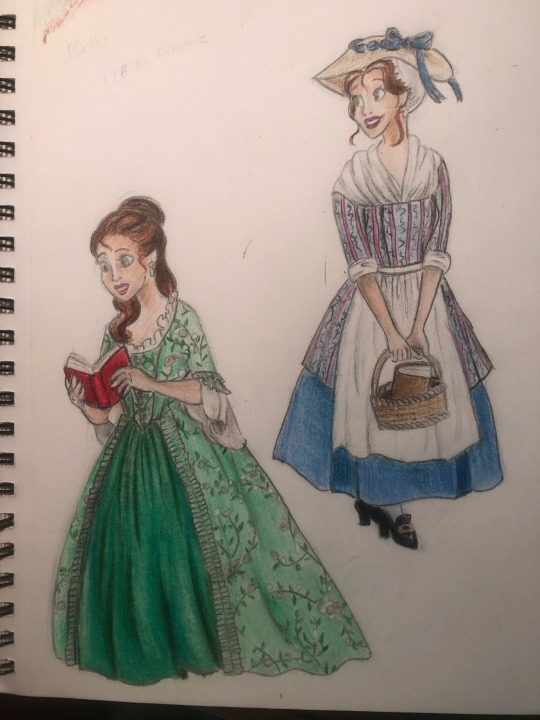
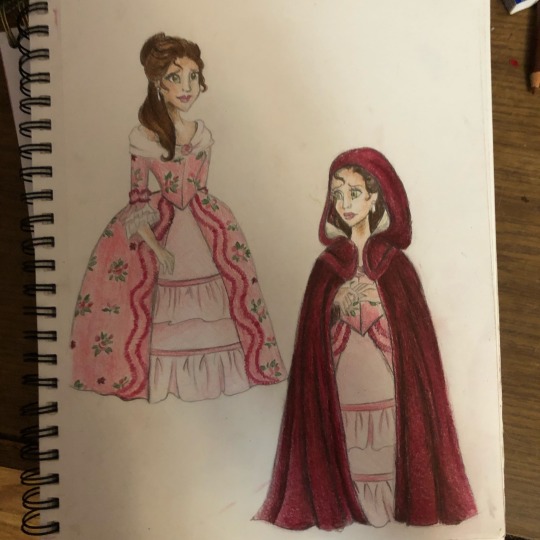
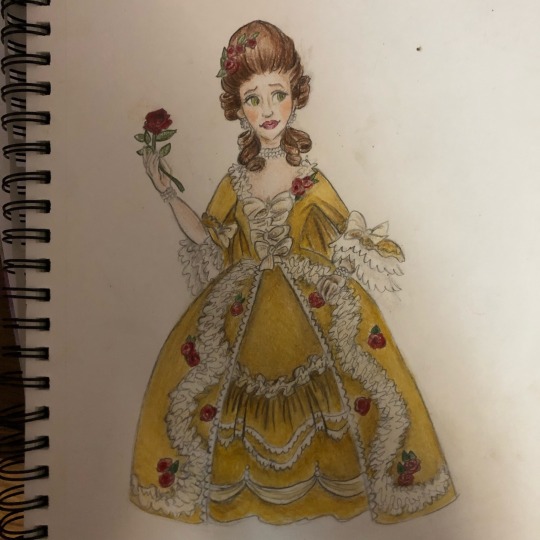
Entry 6 in my historical Disney Princess series: a beauty but a funny girl, that Belle!
I’ve really been looking forward to doing this one because Belle is my favorite Disney lady (tied with Cinderella) and I’ve also got a thing for fashion from the second half of the 18th century. I knew firsthand that Disney’s Beauty and the Beast would have to take place during the 1700s, since the original fairy tale, “La Belle et le Bete” was first published in the 1740s and a good handful of the concept art shows that the artists and animators were definitely going for an 18th century flair. Of course, like any Disney movie, it has its inaccuracies - one of them being the silverware forming the Eiffel Tower, which wasn’t completed until 1889, during “Be Our Guest”. They could have gone with Notre-Dame, but I guess audiences would have recognized the Eiffel Tower more. I don’t know. Anyway, B&TB has always had an 18th century flair to me, and this is retained in the (needless to say, atrocious) live-action remake, so that’s what I went with for Belle. For a time frame for research, I chose the 1760s - 70s, since fashions from this era seemed to suit Belle much better than the outrageous court gowns from during the French Revolution.
Working-class clothing for women seems to have changed little during the second half of the 18th century, so designing my historically-inspired version was easy enough. It consists of an underskirt/petticoat, a jacket/short gown (an upper layer worn by lower class people that saved fabric and also allowed for mixing and matching garments), an apron (as per the original design), and a fichu, a sort of lightweight shawl. Along with this extant example of a middle-class ensemble (wasn’t sure if it was too rich for a working class outfit? Anyway I thought it was pretty and suited Belle), I studied several paintings and drawings of working-class women from between the 1750s and 1770s, such as this and this. This and this were also a great help. I also gave her a mob cap and a bergere hat, like this one, as a working-class woman like Belle most likely would have covered her head while going out and about although I added a few haphazard strands of hair poking out, as in the movie, as I always thought those wayward strands of hair described Belle's carefree, easygoing personality so wonderfully. I also thought it would be a fun, period-accurate way to incorporate the hair ribbon she wears in the original design. The pink striped pattern I added to her short gown was just a pop of color other than blue, to avoid monotony.
The green library gown and pink "Something There" gown are essentially combos of a bunch of different "robes a la Anglaise" from between the 1750s and 1770s. The green gown, for instance, contains the general shape, underskirt, and ruffled trims down the overskirt of this gown, the ruffle around the neckline, button-front, and sleeves of this gown, and the floral pattern of this gown. The pink one is modeled after this dress and features similar trims to this gown (the pink one) and a fichu with a rose in the center like the one on this dress. And, with both outfits, I designed Belle's hairstyles after this portrait from the 1770s, of a woman whose hairstyle already looks a lot like Belle's ballgown hair! So I guess that style was pretty much accurate after all! My goal for both of these outfits was to design dresses that were lush and elegant, dresses that would have been in the Beast's castle, but not as extravagant as Belle's ballgown, as I wanted to depict Belle adjusting to life in the castle. Oh, and I also included another view of Belle in the pink dress, this time with a cloak, inspired in part by this one, over it.
And, last but certainly not least, we have her ball gown. I swear, I designed and scrapped at least two ideas for this one. It was the one I was looking forward to doing most, but in the end the hardest to design. I ended up looking at so! many! gowns!!! for inspiration. I found two mustard yellow robes a la francaise from the 1760s that absolutely screamed Belle so of course I had to throw a bit of them in there. I was also hugely inspired by the portraits of Madame de Pompadour by Francois Boucher, specifically this one and this one. They are from the 1750s, but I felt it would make sense for Belle's gown - hell, any of the dresses kept within the castle - to be from a decade or two ago, since the Beast kept himself in isolation from the world for a decade. And they give off huge Belle vibes too - the frills, the trims, the roses - ESPECIALLY the roses! After all, I wanted there to be a few touches of color in this sea of golden yellow - more specifically, ornamentation in the form of red roses. The trim at the bottom of the underskirt is a shout-out to the sashes adorning the skirt of Belle's gown in the original design. I was initially against adding bows to the stomacher, but I had no idea what to do otherwise, so I went with the bows, and now I think they look exquisite and don't take too much away from the other details! What do you think?
Commissions info
#disney#disney fanart#belle#beauty and the beast#historical disney#historical belle#my art#beauty and the beast 1991#18th century#georgian#rococo
69 notes
·
View notes
Photo


And Bo Peep’s third design!
This one was a little funny... the hairstyles are very very extra.
This is based on an extant 1760s garment! The color blocking definitely reminded me of Bo Peep’s movie outfit and so I went for it! I nearly did poke dots but decided it would be too hokey so I went for a floral hem instead.
I am the artist!!! Don’t repost without permission & credit! Thank you!
Come find me over on: Instagram , Patreon
#bo peep#toy story#the great disney redesign#pixar princess#historically accurate heroines#disney heroine#historical fashion#historically accurate#historical costuming#costume design#character design#ellenart#Digital Illustration
62 notes
·
View notes
Photo
It's not a dress, it's a jacket and petticoat, in the Fries Museum Collection.

Dress 1765
895 notes
·
View notes
Photo
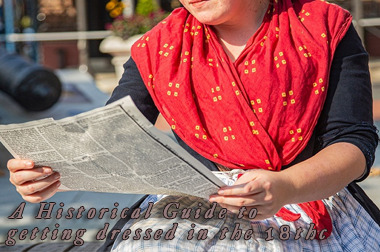
A Historical Guide to | Getting Dressed in the 18th Century [ 1701 - 1800 ] Part 2 Outer Garments !! Female Clothing | Middling - Lower Class | Colonial England - Colonial North America Styles
Check out part 1 here!
Hi friends! I hope you are well. This is part 2 of a historical guide to getting dressed in the 18th century. This got long so there will be a part 3 for everything else. :)
I wanted to share this with you because a lot of what people know of historical costuming is based on tv shows, like Outlander, Poldark, Turn, or Harlots &c. … While some of the clothing is based off extant garments that did exist, many hollywood productions take extreme creative liberties that are not historically accurate to the time period. This post will contain the outer garments and all the correct terms that you may want to include when describing your characters clothing or the way their body moves in the clothing in rpgs. Clothing standards and trends did evolve over the the course of the 18th Century and did vary widely based on social class status, location, religion, race, ethnicity, nationalities and cultures.
For the majority of the English / American experience during the 18th Century, most would have been of the Middling - Lower social class; working class as trades people, farmers, servants, slaves or employed by the military in various different occupations [want a guide?] .
Assume everything was hand sewn using either linen, or silk threads, with linen, wool, and some cotton prints (and more!) materials. If you have specific questions about materials please ask.
If you have any other questions please ask me. I can help you with research :) If you are interested please continue reading more…
This list is in order of first layer to last.
Everything a woman wore in the 18th century was either tied or pinned on, with the exception of riding habits, worn while on a journey on horseback. If a person had the means to have a set. Riding habits mimic the males style with buttons and were often accompanied with a waistcoat, a long sleeve shift, and petticoats that matched the riding habit.
PETTICOATS also known as “the skirts” or “skirt”, a term which did not come into use until the mid 19th century. Would have been worn by all classes of women during the 18th century. The Petticoat is worn in such a way where the two bands and petticoat ties are tied around the front of the body. Women would wear at least two - three layers of petticoats with the first usually a light-weight linen so it can be laundered if needed. Other layers could be made from worsted wool, flannel, linsey woolsey, hand quilted silk, hand quilted flannel or a documented cotton print of petticoat to match the outer gown of the same print.
GOWN As stated at the beginning of this post, clothing for the individual person varies widely in size, style, shape, and color. The outer garments are no exception. The style of gown that we’ll focus on is an English style gown, which includes a stomacher and robings, the most common style for the majority of the 1760’s - 1770’s. Gowns varied from location to location and from culture to culture. Gowns could be made from any material such as silk, lightweight wool, linen, linsey woolsey, printed cotton, or printed calico and chintz.
BEDGOWN | Bedgowns became a staple in British and American wardrobes and not usually seen until the later half of the 18th Century. They are most appropriate for early morning and nighttime wear as they are described as a ‘wear-at-home’ clothing item. Bedgowns can be made from different kinds of fabric such as worsted wool, wool flannel, documented cotton print, linsey woolsey, and linen. Bedgowns of the period come to just about thigh length, and are often topped with an apron to finish the outfit.
APRONS While aprons can be a decorative item of clothing for a woman’s wardrobe as it was the outermost layer that was first visible, aprons can be described as a utility item of clothing. They not only help close all the layers around the body but could be used to protect the other layers from getting dirty. Since aprons were the first line of defense for the other layers they were most commonly made from linen in order to be laundered and were made from a in a variety of patterns and colors, such as blue or brown check, small stripes or solid white. Plain worsted wool aprons were also documented in this era. Aprons should be narrowly hemmed around the edges and be long enough to meet the length of your petticoat or just an inch shorter. All material should be stroke gathered into a narrow waistband of the same fabric and should fasten with narrow linen or hand loomed tapes around the waist and tied in the front of the body.
CAPS There are many different styles of caps and the style of the cap is up to the individual. Caps would always be worn to cover most of the hair, sitting at the crown of the head, secured to the hair with straight pins. Caps would have been made out of a very thin (nearly transparent) bleached white linen, and decorated with a silk ribbon.
SILK BONNETS Were one of the more popular style of hat worn on the east coast with an overwhelming amount of women and children having one. According to the blog kittycalash and her post A Bonnet, Universally Acknowledged: “ Brim shape and bonnet material— fabric and colour– vary by period (and region). So let’s look at Boston in the first years of the 1770s. One tricky bit is that there are fewer indentured servants and enslaved people in Boston than elsewhere in the American Colonies in this period, so runaway ads are scarce, giving us fewer clues than we get in Pennsylvania and points south. Still, there are plenty of ads to help guide us … Most bonnets (70%) were black, but a few white, green, crimson, and blue were seen. Most bonnets were made of silk satin, with others of taffeta or sarsnet (sometimes twilled silk). Most bonnets would have a shorter, higher brim that curves across the face just above eye level, with a high, rounded crown/caul and bow trims. Bonnet brims would vary between bonnet (paste) board and boned. ”
CLOAKS | Cloaks most commonly appeared in red and blue, but also may be cream, gray or black. The hood may be lined in a white or color matching silk, wool, or linen and the closures should be made from period correct hook and eyes or ties. The Edges may be faced in wool plush or matching silk. Period appropriate gimp may also be used. Cloaks could be in a variety of lengths as well otherwise known as a “short cloak”.
image by wickersty [ more to come in a part 3! ]
13 notes
·
View notes
Text


Step 1 of any project for me is gathering supplies and materials and laying out a plan of some sort.
Pictured here is my basic hand sewing kit. Large fabric scissors, a smaller pair for snipping wayward thread and trimming, tailors chalk, my needles, beeswax, a tailors thimble, thread to match the project (currently white cotton) and a measuring tape. These, excluding the big scissors, get stowed in a small plastic box that fits handily in a bag or pocket. I also have a pincushion that is invaluable when working on larger projects.
On the right is an overview of my planning for the shirt. Because it's all squares and rectangles it was very easy to plan out each piece and draw a cutting diagram. I also made sure to write out each step before getting into it, as ADHD makes it hard to remember what goes when and easy to get ahead of myself.
Not pictured are my research materials. For this project I'm heavily referencing the book Costume Close Up which is wonderfully detailed book with diagrams and construction details of all sorts of 18th century garments, men's and women's alike. For ideas on embellishment and pattern on the coat and breeches I'm looking at portraits from the era and extant garments from the 1760s. In addition to these, I'll be referencing tutorials shared by other historic costumers for details I can't find in my books!
#historic sewing#18th century#18th century fashion#hand sewing#hand crafting#im keeping a private project journal as well that i may share some of#the early stages tend to go pretty quick from one task to another
1 note
·
View note
Photo
I like these funky little upside down flowers

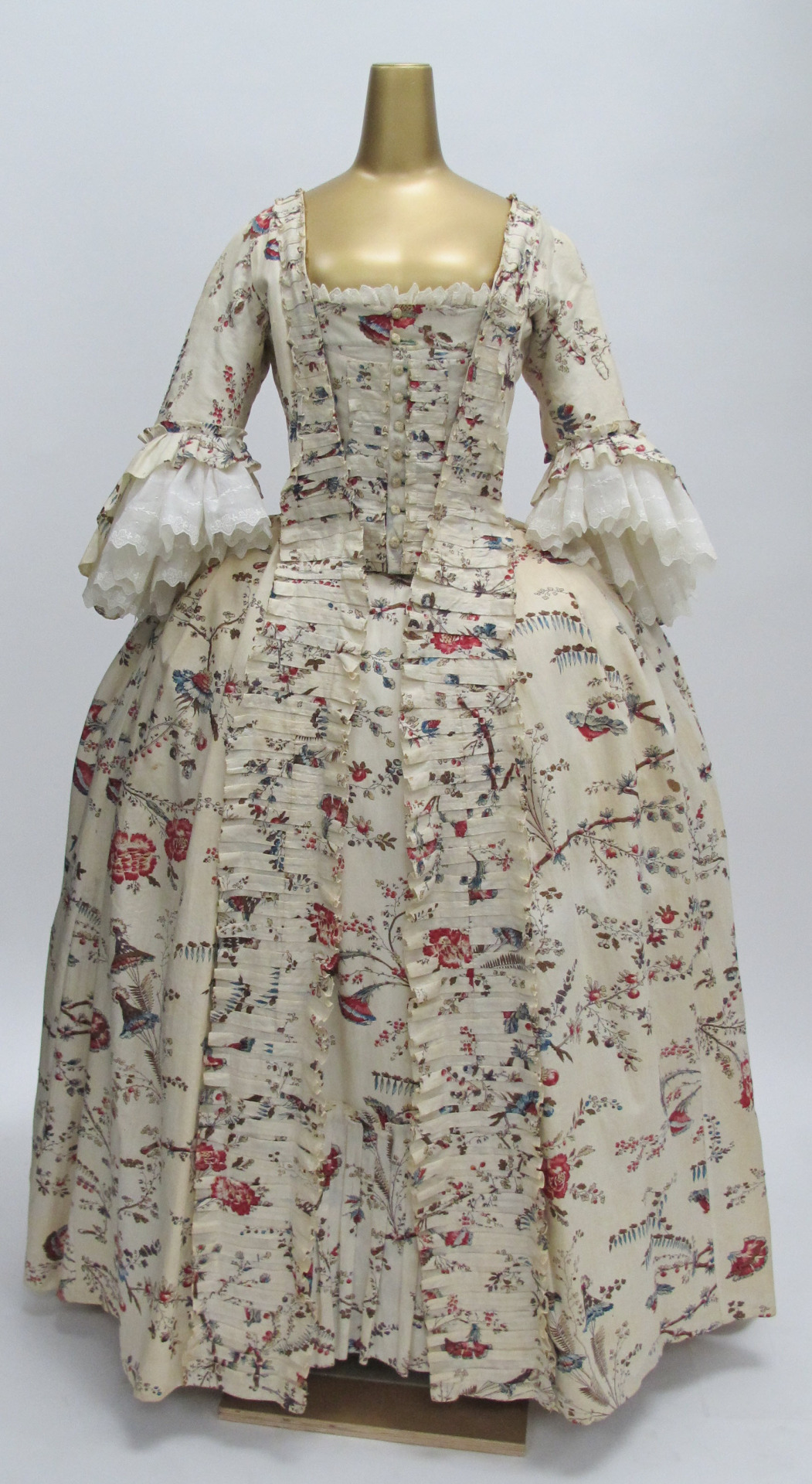
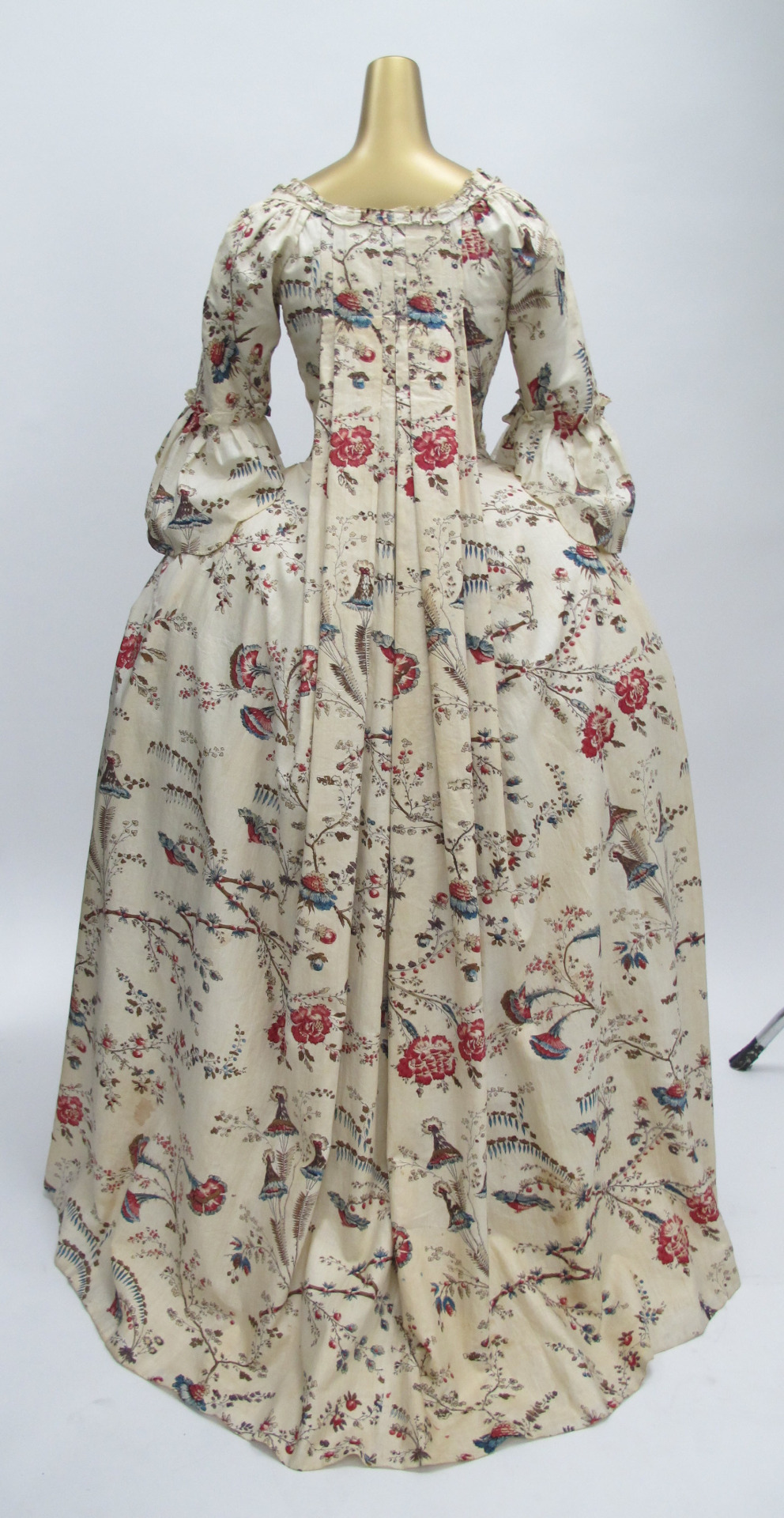
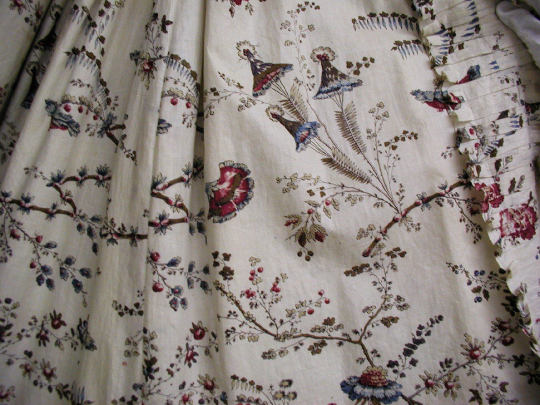
1760s Robe à la française (Franch)
cotton
(Metropolitan Museum of Art)
415 notes
·
View notes
Text

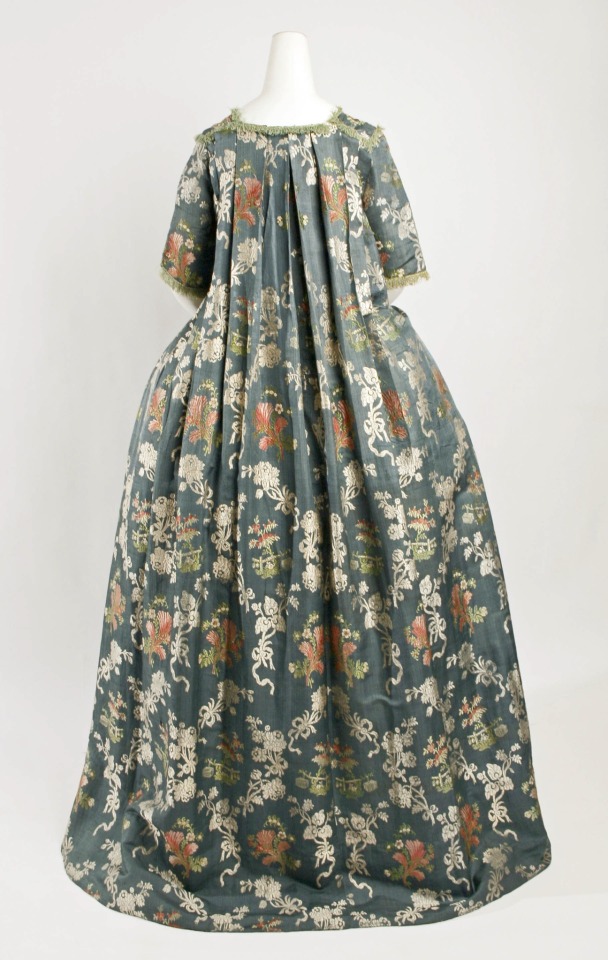
Green Embroidered Silk Dress, 1750-1775, Italian.
Met Museum.
#green#embroidery#womenswear#extant garments#dress#silk#1750#1750s#1760s#1770s#1750s dress#1760s dress#1770s dress#1750s extant garment#1750s Italy#1760s Italy#1770s Italy#1760s extant garment#1770s extant garment#italian#met museum
180 notes
·
View notes
Text
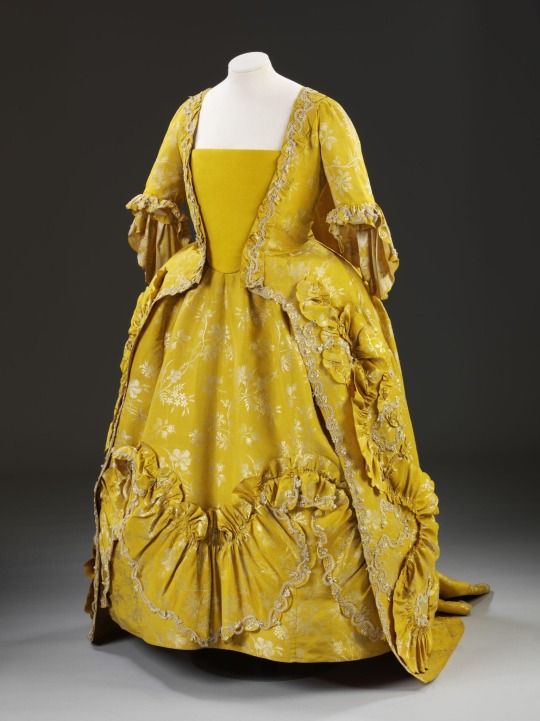


Yellow Silk Robe à la Française, 1760-1765, British.
Victoria and Albert Museum.
#yellow#womenswear#extant garments#dress#silk#1760#1760s#robe à la française#1760s dress#1760s extant garment#1760s britain#V&A
167 notes
·
View notes
Text

Yellow Silk Robe à la Française, 1760-1765, English.
Victoria and Albert Museum.
#yellow#dress#womenswear#extant garments#silk#robe à la française#V&A#1760#1760s#1760s dress#1760s England#English#1760s Britain#British#1760s extant garment
69 notes
·
View notes
Text


Yellow Striped Silk Dress, 1750-1775, European.
Met Museum.
#yellow#silk#stripes#dress#1750s#1760s#1770s#18th century#European#met museum#extant garments#1750s dress#1760s dress#1770s dress#1750s extant garment#1760s extant garment#1770s extant garment
102 notes
·
View notes
Text
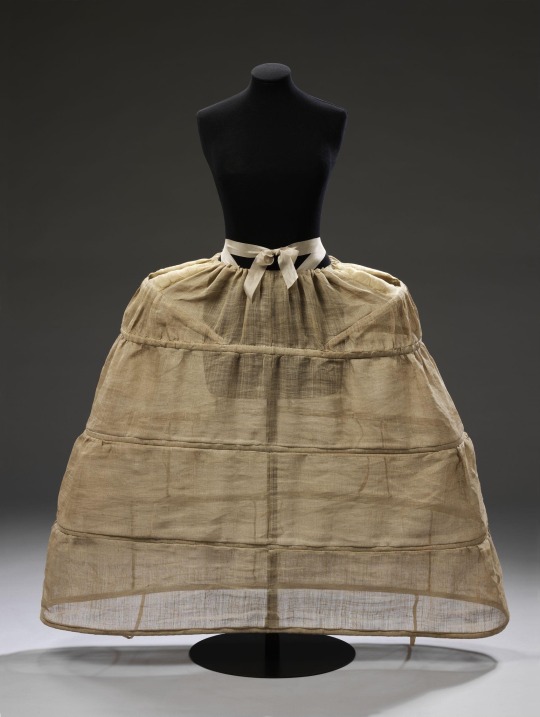
Beige Linen Hoop Skirt, 1760-1780, Irish.
Victoria and Albert Museum.
#beige#linen#Irish#1760s ireland#1770s Ireland#1760s#1760#1770s#womenswear#extant garments#1760s hoop skirt#hoop skirt#V&A#1770s hoop skirt#1760s undergarment#1770s undergarment#1760s extant garment#1770s extant garment
33 notes
·
View notes
Text
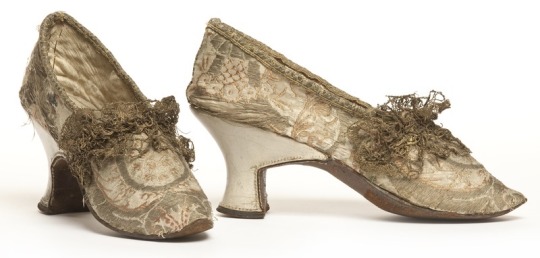
Beige Silk Shoes, 1750-1770, French.
Musée des Arts Décoratifs Paris.
#beige#silk#shoes#1750s shoes#1750s#1760s#1760s shoes#1750s france#1760s france#reign: louis xv#France#French#mad paris#musée des arts décoratifs paris#1750s extant garment#1760s extant garment
39 notes
·
View notes